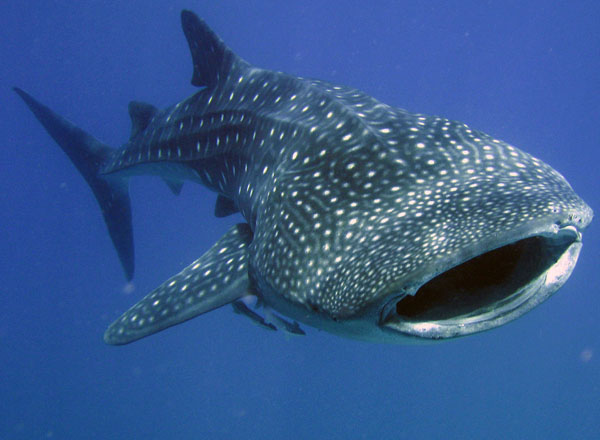

The whale shark is not only the largest extant fish species, but perhaps the largest fish ever to have existed.
#WHALE SHARK SIZE FULL#
All but the very largest of predatory animals that attempt to bite a whale shark are going to come away with a mouth full of gristle, if anything at all.
#WHALE SHARK SIZE SKIN#
This remarkable skin may be one of their most extraordinary adaptations, providing structural support (enhanced by the ridges), insulation, and exceptional defence against both predators and well-meaning scientists trying to attach satellite tags. The skin consists of a tough, thin, pigmented outer layer or epidermis, in which the denticles are embedded, and a thick, rubbery, white dermis of dense and collagenous connective tissue. Anything that enters the mouth must be swallowed or must be small enough to pass through the filter pads, or it can be ejected back out of the mouth by a motion that resembles coughing. This capacious chamber houses the ten gills and 20 filter pads. It extends back as far as the middle of the pectoral fins, accounting for perhaps 30 per cent of the body length. The directional smelling abilities of whale sharks must surely be excellent.īehind the jaws lies a truly enormous orobranchial chamber that makes the whale shark effectively a ‘swimming mouth’. But the nares of whale sharks are large and far more widely separated than those of even the largest hammerhead, it’s just less noticeable because their head lacks that iconic hammer shape. Much is made of the cephalofoil (the ‘hammer’) of hammerhead sharks and how it serves to separate the nares in those species, allowing them to better determine the direction of origin of smells, a sort of stereo-olfaction, if you will.

The very wide and square mouth, which can be up to 1.5m in horizontal diameter, has a side effect, which is to widely separate the nares (analogous to nostrils) of the whale shark. This rostrum varies from pointed (mako sharks, Isurus spp.) to bluntly squared (tiger sharks, Galeocerdo cuvier) to rounded (most carcharhinids or ‘typical’ sharks), or to wildly modified, as in the hammerhead, winghead, and bonnethead sharks ( Sphyrnidae). In other words, the mouth opens right at the front of the head, which is unlike every other extant shark species, in which the mouth is subterminal – sometimes even ventral – and preceded dorsally by a section of the body called the rostrum or snout. The unusual features of whale sharks start at the very front: the whale shark has a terminal mouth. Photo-identifying an adult female whale shark, Galápagos (Photo: Simon J Pierce) For better or worse, people tend to prioritize large animals in conservation, so the future plight of whale sharks may be tied to their tremendous size, in much the same way as is the increasing public awareness of this exceptional animal. It is not a trivial issue, not just biologically, but because body size plays a surprisingly important role in conservation. In this brief introductory chapter, we explore fundamental questions about the size of whale sharks, and seek to place this extraordinary animal in a comparative context. Doubtless, the enormous size of whale sharks is a principal factor promoting public interest in this species, and may even be one reason why you are reading this book. Exploring and identifying which member of any given animal group is the biggest, the fastest, the smallest, or the heaviest, seems to be a natural and irresistible part of human nature, and our drive to classify and measure things. People are inherently interested in extremes, especially when it comes to animals. In an exclusive, edited extract we look at why they grow to such a phenomenal sizeīy Alistair Dove, Mark Meekan and Craig McClain This fascinating overview of exactly what we know about whale sharks was edited by Alistair Dove and Simon Pierce. Researcher Jonathan Green face-to-face with an adult female whale shark in the Galápagos (Photo: Simon J Pierce) The world’s leading whale shark scientists have collaborated on the definitive guide to our largest fish. Revillagigedo Archipelago & Guadalupe Island.


 0 kommentar(er)
0 kommentar(er)
